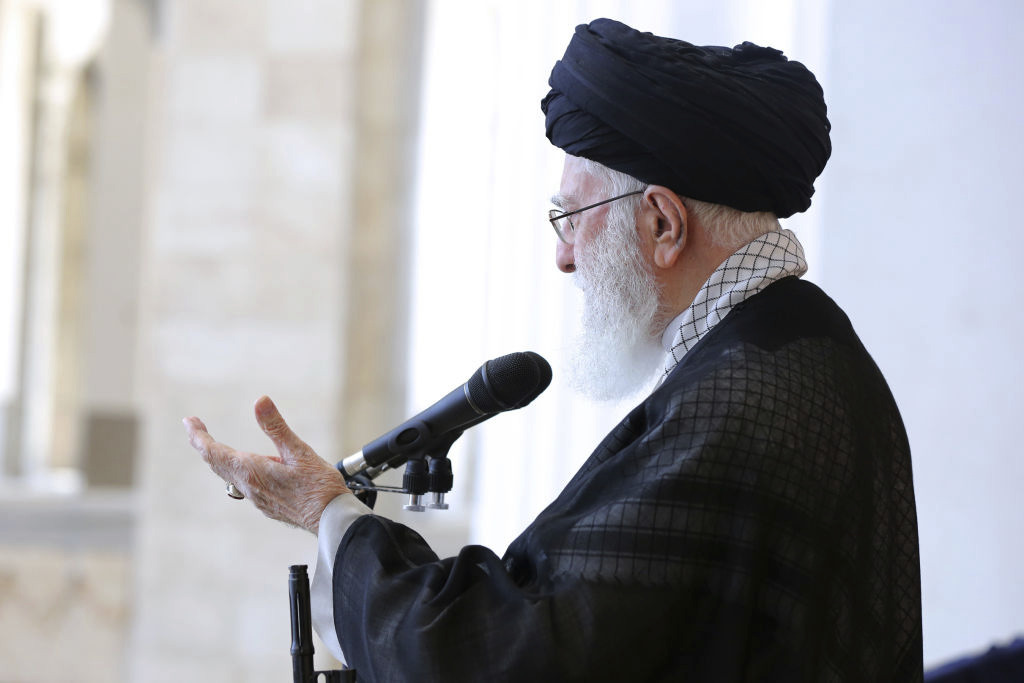Yahya Sinwar's plan for October 7 and Hamas's resurrection after the war was planned years in advance.
By JERUSALEM POST STAFF OCTOBER 6, 2024 09:18 Hamas leader Yahya Sinwar in an underground terror tunnel in Gaza (illustrative)
(photo credit: VIA REUTERS)
Hamas leader Yahya Sinwar in an underground terror tunnel in Gaza (illustrative)
(photo credit: VIA REUTERS)
The years prior to Hamas’s October 7 attack saw Hamas leader Yahya Sinwar push the terror group to adopt a new strategy of self-reliance, anonymous Hamas officials told the Washington Post in an article published on Saturday.
The preparation and construction of Hamas’s “labyrinth” of tunnels in Gaza were all part and parcel of the plan to attack Israel on October 7 - an attack announced to Sinwar’s guests six months before the attack, participants in the meeting told the Post in the first such admission.
According to the Post, the tunnel system costs hundreds of millions of dollars and reportedly extended 300 miles—longer than the New York City subway or about the distance from Tel Aviv to southern Turkey.
“There’s going to be a surprise,” Sinwar said, according to one of the participants in the meeting.
Preparing for the ‘resistance phase’ following the October 7 attacks, Hamas leadership invested in ensuring that the terror group would have the ability to manufacture its own arsenal. This foresight reportedly enabled the terror group's leaders to withstand a year-long battle with the Jewish state.
“We succeeded in making manufacturing factories underground,” Ghazi Hamad, a member of Hamas’s political bureau from Gaza, said in an interview with the Post, “because we knew that one day all the channels would be closed.”
Beyond manufacturing and storing weapons, the underground networks served as a communications network, supply depots, highway systems, logistics pipelines, bomb shelters, and field hospitals, officials told the Post. They also became traps for soldiers and prisons for some of the remaining hostages abducted on October 7.
IDF investigators found only a few Iranian-made weapons. Instead, they uncovered small workshops repurposing scavenged pipes and agricultural chemicals into weapon components.
US and Israeli officials both described the sense of surprise at the extent of Hamas’s new tunnels - dubbed Gaza’s ‘metro.’
IDF officials told the Post that they initially believed the Hamas bunker was about 30 feet deep. However, further searches revealed shafts leading 120 feet underground, offering insight into the extensive efforts Israeli forces would need to undertake to locate and destroy Hamas's 'metro' tunnel network.
Stay updated with the latest news!
Subscribe to The Jerusalem Post Newsletter
“Their eyes were bulging,” said a former US counterterrorism official who visited Hamas-built tunnels as a guest of the IDF. “They had no idea of the labyrinth. Can you image 150 kilometers of tunnels? The reality was several times bigger.”
“In Gaza we were working day and night, day and night, 24 hours,” Hamad said. “We prepared a lot, not for one year or two years.”
“Nobody understood how extensive the tunnels were, or that there were so many different types of tunnels,” said Dana Stroul, the deputy assistant secretary of defense for the Middle East during the first three years of the Biden administration.
Hamas’s previous strategies
In previous wars, Hamas would smuggle in weapons through tunnels into Egypt - in many cases, reopening tunnels closed by IDF forces with drills.
Unlike previous battles, intelligence analysts told the Post that, in the period leading up to October 7, weapons had found their way into Gaza above ground - through border crossings guarded by both Egypt and Israel.
The secret funding chain propping up Hamas’s attacks
While Hamas’s policy of self-reliance saw the group manufacture its own weapons, it was not without the support of outside parties.
Anonymous officials told the Post that the group had accumulated tens of millions of dollars - only some of which was from Iran. The group officials readily admitted under the condition of anonymity that Hamas had also siphoned aid money, charitable contributions, tax revenue, and shareholder deposits stolen from Gazan banks.
Tehran further supported the terror group by facilitating their travel to Iran, where they received training, IDF officials told the American publication.
Hamas also saw members leave Gaza to head to Lebanon, where Iran reportedly set up an operations room to share military strategy and technical information.
In addition to funds and training, some weapons components were being shipped in from outside Gaza, Hamad revealed. Things such as machine tools and agricultural chemicals used for explosives were either labeled for civilian use or hidden inside shipments of food or other everyday wares, he boasted.
“We are in the situation that pressures us to do everything, and collect everything,” he said. “We face a very dangerous country, with a lot of technology and weapons. It’s not easy to fight Israel. We knew this equation very well.”
Hamas’s arsenal
IDF officials reportedly estimated that 80% of Hamas’s weapons were now manufactured in Gaza, although the Post reported it likely they took inspiration from surrounding terror influences in the region.
Hamas relies heavily on short and medium-range rockets, such as the M-75, which is reportedly capable of striking as far as Tel Aviv. The M-75 is based on Iran’s own Fajr-5.
Hamas more commonly uses the 'Qassam,' a rocket that the group developed over 20 years ago. It is made from steel water pipes and filled with explosives made from sugar and potassium nitrate fertilizer.
While few rockets actually hit Israel, the Qassam costs only a few hundred dollars to make, while Israel’s Iron Dome costs $50,000 per launch to shoot it down.
Hamas plans its resurrection
A year-long war with Israel has seen 15,000 of Hamas’s terrorists eliminated, according to regional intelligence officials cited by the Post. Many of the group’s estimated 5,700 tunnels have been destroyed.
Despite the current state of Hamas, plans are already underway to restore the terror group, despite Prime Minister Benjamin Netanyahu’s war goal to see the complete eradication of the terror group.
Hamad said that Sinwar had dedicated significant planning to ensuring the terror group could revive itself after Israel’s response to October 7 - which Sinwar had predicted would be substantial.
Funds are believed to have been funneled away for Hamas’s comeback - a total amounting to hundreds of millions of dollars in cash and cryptocurrencies.
Hamad claimed that despite Israel’s efforts, the terror group still had “channels” to funnel funds from.
Despite the terror group’s substantial funds, some of the 50,000 civil workers in Gaza have received only half of their salaries, and some have said they were not paid at all.
The war has caused significant losses for Palestinian civilians in Gaza, many of whom have lost their homes or had relatives killed during strikes on Hamas, which embeds itself in civilian areas. According to Arab analysts, these losses may also be contributing to Hamas's recruitment efforts.
“There is no shortage of young volunteers,” a senior Arab intelligence official said. “Perhaps they are not as well trained, but they will help Hamas make up for its losses. These are the people who have lost families, and they have one motive: revenge.”
Tapping into this, the al-Qassam Brigades, Hamas's military wing, has begun promoting insurgency over social media.
Words of warning
Sinwar, in both public speeches and private discussions, had reportedly bragged of the battle to come and the extensive works employed by the terror group.
“We will come to you, God willing, in a roaring flood,” Sinwar threatened at a rally for his supporters in Gaza on Dec. 14, 2022. “We will come to you with endless rockets. We will come to you in a limitless flood of soldiers. We will come to you with millions of our people, like the repeating tides.”
Sinwar had wanted to disturb Israel’s status quo and “made sure the money and material were there for many years,” Abu Hamza (nom de guerre), 33, a Hamas commander in the West Bank town of Jenin, told the Post.
“Hamas built really well for this thing,” Hamza added. Inside the tunnels, Hamas was “hiding weapons and making their own.”

 By The Jerusalem Post (World News) | Created at 2024-10-06 06:30:12 | Updated at 2024-10-06 08:16:31
1 hour ago
By The Jerusalem Post (World News) | Created at 2024-10-06 06:30:12 | Updated at 2024-10-06 08:16:31
1 hour ago



